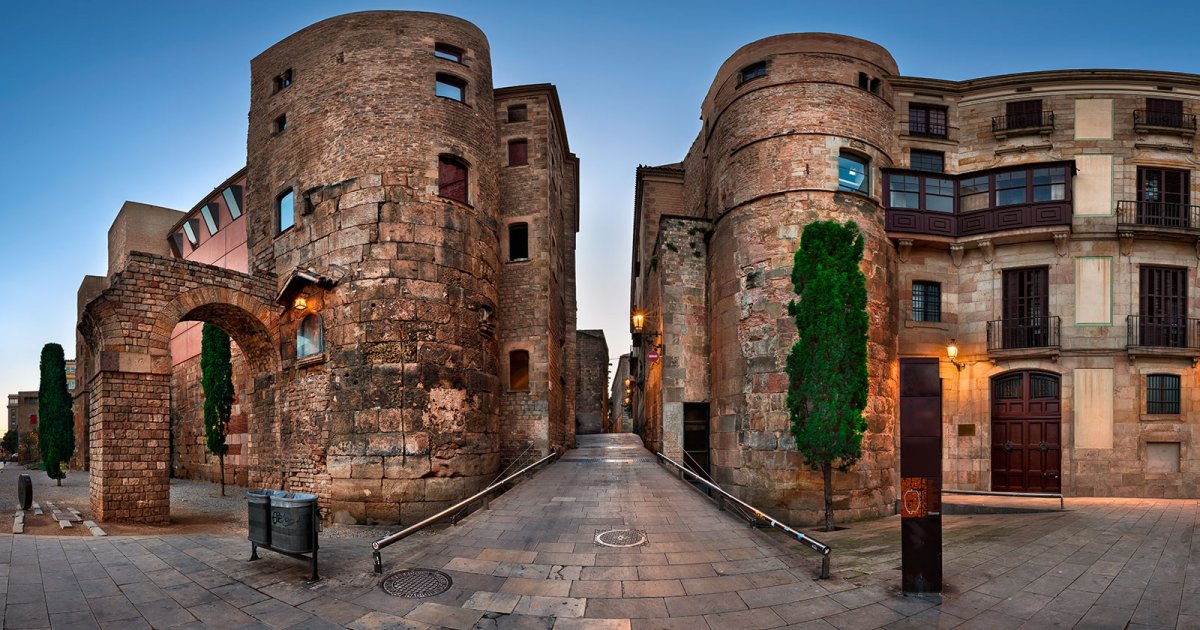BARCINO, Roman Itinerary
 Language: English / USA
Language: English / USA
Hi, I'm Debbie, your personal guide. Together with MyWoWo, I'd like to welcome you to one of the wonders of the world.
Today I'll accompany you through "Barcino", one of the oldest parts in Barcelona.
Are you ready for a journey through time, all the way to the first century BC? Historians still don't agree, but according to most of them Barcelona was founded by the ancient Romans, and precisely by Emperor Augustus, who in 12 BC gave the new city the name "Barcino".
Your pedestrian itinerary, which is entirely within the Barri Gòtic, or Gothic Quarter, will follow the perimeter of Barcino starting from Plaça de la Vila de Madrid. Here you are just outside the ancient walls, where a necropolis once stood. In fact, the law required that cemeteries were placed outside the walls. Walk along Carrer de la Canuda to reach Plaça Nova.
Here you can see the remains of the ancient walls and north door of Barcino, flanked by two square towers, the lower part of which are Roman. If you look at the tower on the left, you'll notice an arch sticking out, which is a piece of the aqueduct that used to supply the inhabited center.
Follow the wall along Carrer de la Tapineria and Carrer del Sotstinent Navarro and you'll reach Plaça dels Traginers, where a defensive tower stands. Then continue along Carrer del Correu Vell and turn right onto Carrer de Regomir until Pati Llimona, the civic center where you can see the remains of the city walls, fragments of walls, and thermal baths.
Now go to Carrer del Call, in the heart of the former Jewish quarter: at number 5 you'll find a jewelry shop that still has traces of the western wall. Your journey into the era of Imperial Rome ends in Plaça de Sant Jaume, which was probably the ancient Forum, or the main square, located at the crossroads between the two major streets which in Roman urban terms were called "cardo" and "decumano".
FUN FACT: do you have to go and want to do so with the grace of God? On Carrer de Regomir, which was built inside the Roman walls, there has been a chapel dedicated to St. Christopher for over 500 years, the patron of travelers. On July 10th, the saint's holy day, a priest spends the day in front of the chapel blessing vehicles and giving lavender flowers to travelers.
And with this we have finished our tour of the remains of Barcelona from the Roman Era. MyWoWo thanks you for staying with us, and will see you at the next Wonder of the World!



